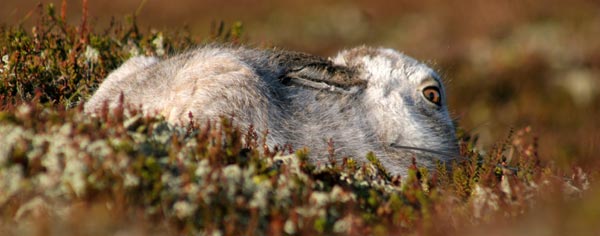Estimating Mountain Hare numbers
Estimating animal abundance or density is a central question in ecology and wildlife management, yet remains problematic. Methods must be tailored to the question, habitat and species under study. Whilst direct methods such as capture-recapture can provide reliable and robust population estimates, these methods may be intrusive, costly in terms of equipment, time and labour, and require specialist knowledge to implement. Indirect methods, which count or estimate signs of an animal - for example dung - are usually simpler and cheaper to carry out and more applicable to surveying large areas.
Assessment of mountain hare abundance is necessary to inform management of mountain hare populations but no simple and widely applicable method has yet been developed. Developing a reliable method for estimating mountain hare numbers that could be used by non-specialists to estimate mountain hare density across a range of densities, habitats and scales was identified as a high priority in the review of the conservation status and management of mountain hares commissioned by SNH in 2005.
In view of these needs we decided to investigate the use of dung clearance plots to derive density by calibrating dung accumulation rates with capture-recapture density estimates. This method has been evaluated and is widely used to assess snowshoe hare abundance in North America and dung standing crop counts have been shown to be strongly associated with mountain hare density estimates on heather moorland in Scotland. Ongoing field trials on a range of sites with differing hare densities are seeking to establish the correlation between hare density and dung accumulation rate.
Back to Management of Mountain Hares main page
|
Updated: 23 Jan 2024, Content by: SN
|

